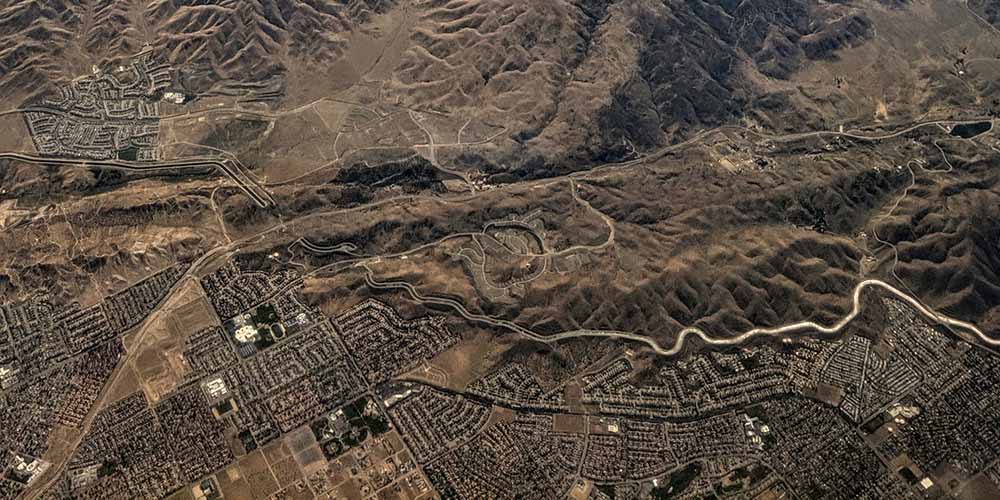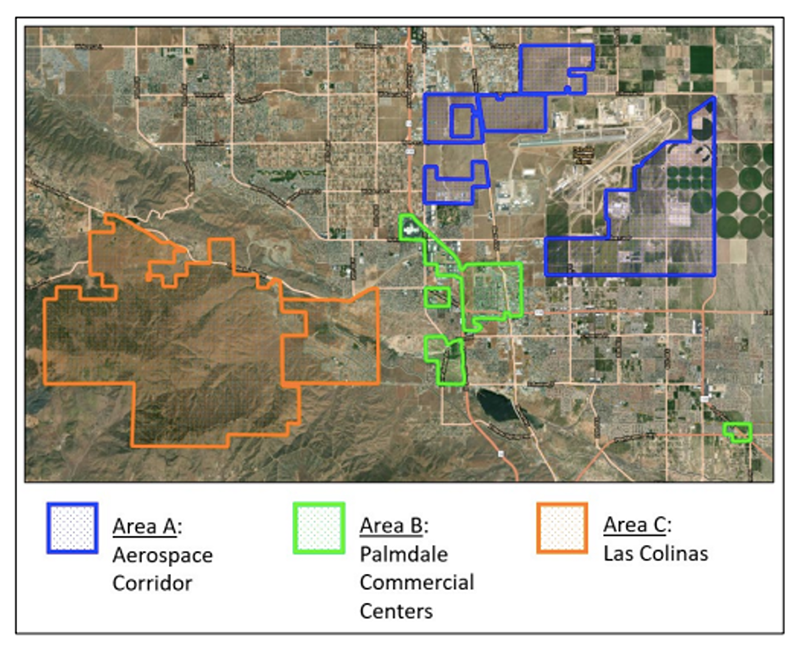
(Photo: dicklyon/Wikimedia)
In a time of economic turmoil and uncertainty, Palmdale, situated in northern Los Angeles County in the heart of the Antelope Valley region, is a city poised for growth with a key asset that is often scarce in population dense regions.
A long-time aerospace and defense hub, the city is home to several manufacturing centers providing solid middle-class jobs and was recently named the most business-friendly city in the county. Housing is also more affordable relative to other cities in the region. In considering the future of the city and its economic development prospects, local officials had a large amount of underutilized land that could be tapped for new commercial and residential development.
The city had the land but would require a significant investment in infrastructure to support new development and attract private investment. To solve for those funding needs, Palmdale is one of the latest jurisdictions to utilize the enhanced infrastructure financing district economic (EIFD) development tool.
Luis Garibay, director of Palmdale’s Department of Economic and Community Development, in explaining the decision to develop an EIFD, emphasized the regional and economic benefits.
“With a focus on infrastructure, we can generate investment that will benefit not just one project but the entire area,” said Garibay. “There was also the ability to create a partnership with the County of Los Angeles to collaborate on a larger scale and do larger-scale projects.”
Enhanced Infrastructure Financing Districts, or EIFDs, are an economic development tool signed into state law in 2014, championed by the California Economic Summit network to fill the gap left in community investment by the dissolution of redevelopment agencies. EIFDs allow cities to allocate a portion of the incremental value in property tax expected from new development to pay for necessary infrastructure investments to support that development: expenses like highway construction and parking facilities, water treatment facilities, broadband access, and even projects that enhance community resilience to climate change.
The Palmdale EIFD was established in 2021 in partnership with Los Angeles County and has the distinction of being the largest of its kind in the state, consisting of more than 27,000 acres. Over its approximately 50-year lifetime, the EIFD is anticipated to allocate $176.2 million of infrastructure spending to support $3.5 billion in private sector investment. The goals of the district, laid out in its Infrastructure Financing Plan, include adding additional housing units and improving job opportunities, and in the process reduce the amount of time residents spend commuting.
Palmdale’s Department of Economic and Community Development credits a collaborative process between staff and elected representatives of the City of Palmdale and County of Los Angeles that made it easy to share information and align on goals and projects that would be of regional significance.
The boundaries of the EIFD are non-contiguous, consisting of land located in the City of Palmdale and unincorporated Los Angeles County, and centered around the city’s jobs and housing centers. The three sub-areas (depicted on map below) include an Aerospace Corridor, poised for future aerospace and industrial growth, Commercial Centers, including commercial developments, the Palmdale Regional Medical Center, and the new Palmdale Transportation Center, and Las Colinas, where 6,800 new units of housing are planned.

Source: City of Palmdale Enhanced Infrastructure Financing District Infrastructure Financing Plan
As Palmdale looks to the future, exciting developments on the horizon include connections to both the California High Speed Rail system and Brightline West with service to Las Vegas, and potentially the return of commercial air service to the region. The city is also looking to remake its downtown and promote tourism opportunities in its location adjacent to the high desert.
As Garibay put it: “We have the ability [in 2022] to create new jobs and investment opportunities and create a sense of pride and place in our communities…so instead of spending time on the freeway people can spend time here and enjoy these assets and opportunities with their families.”

